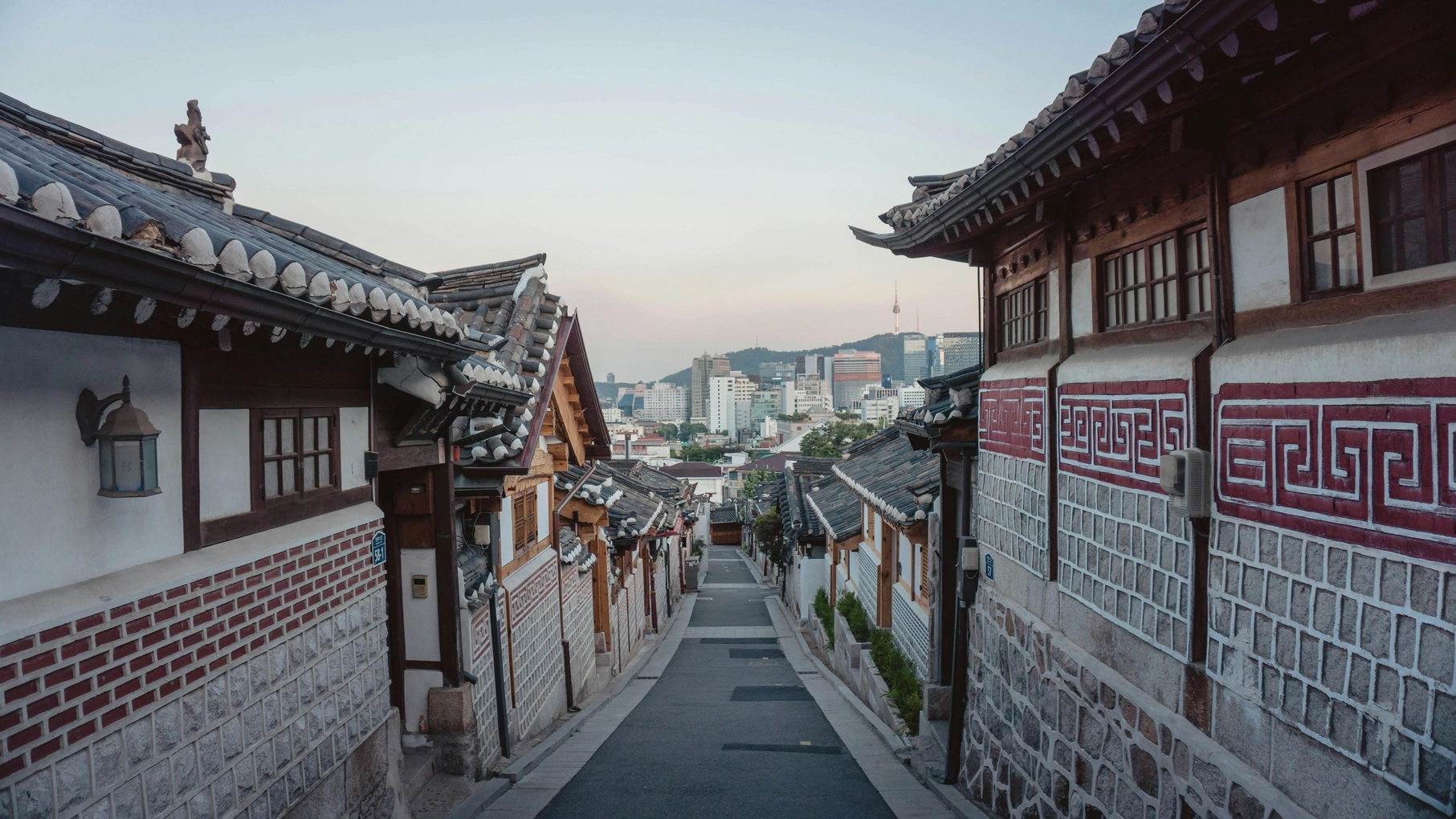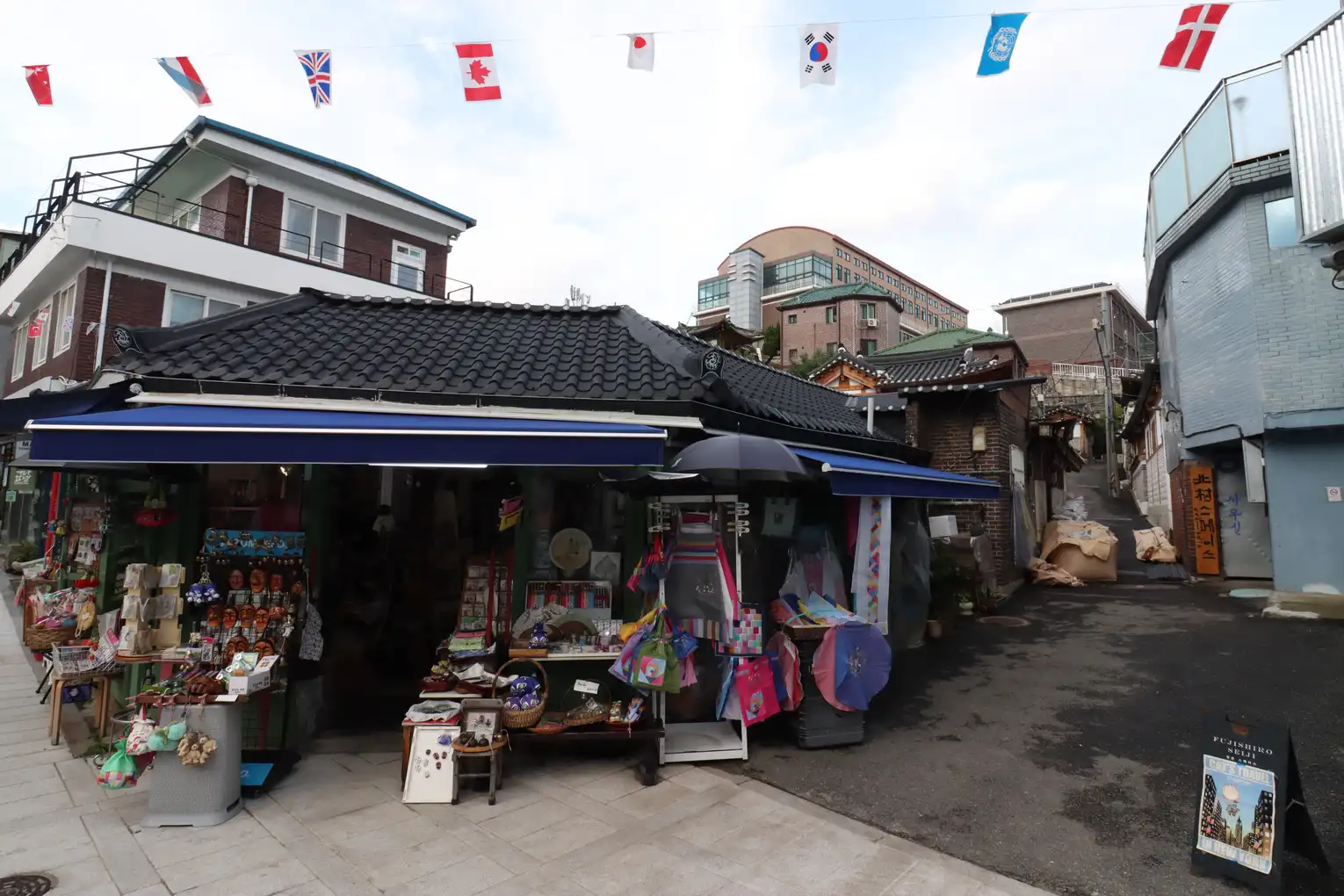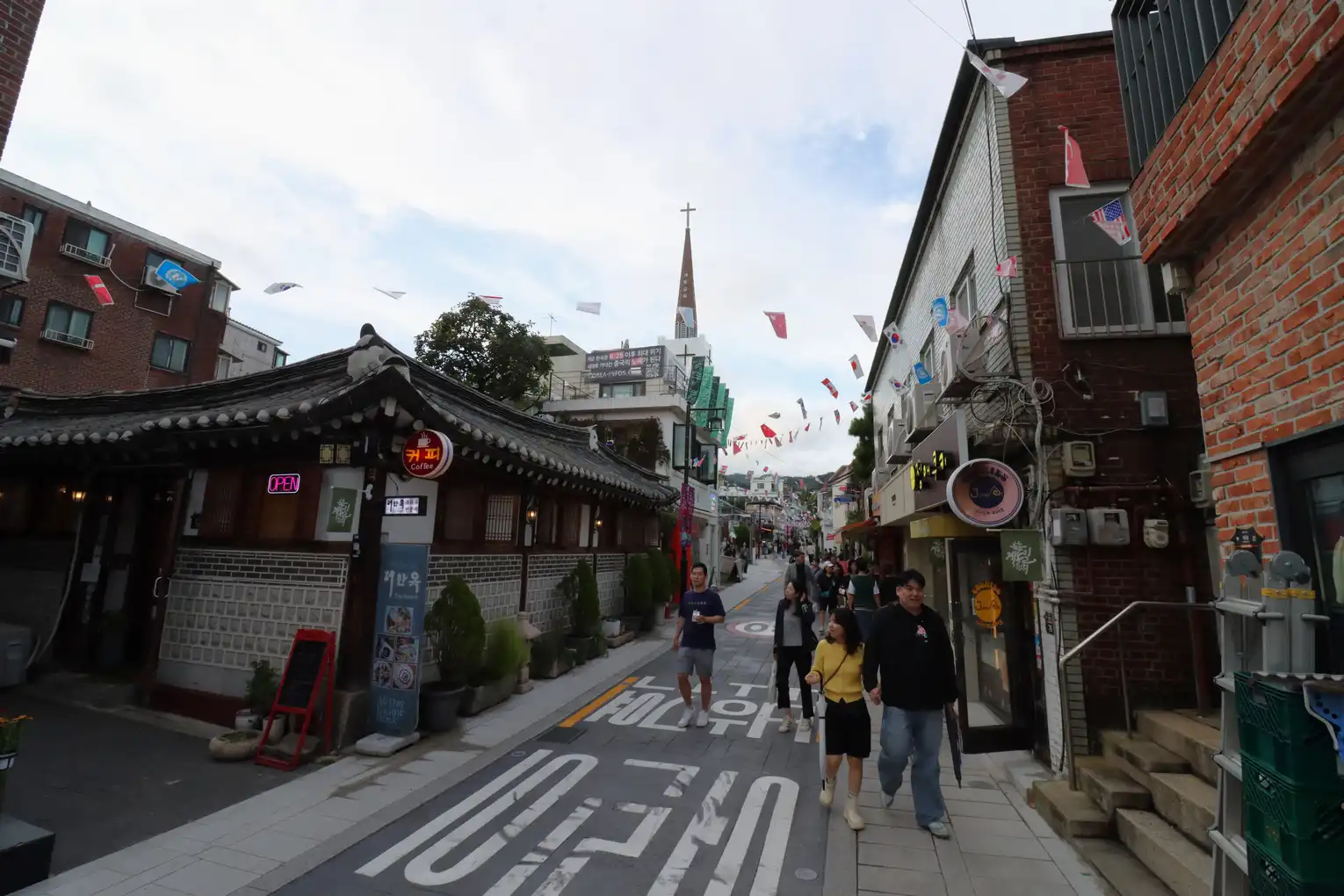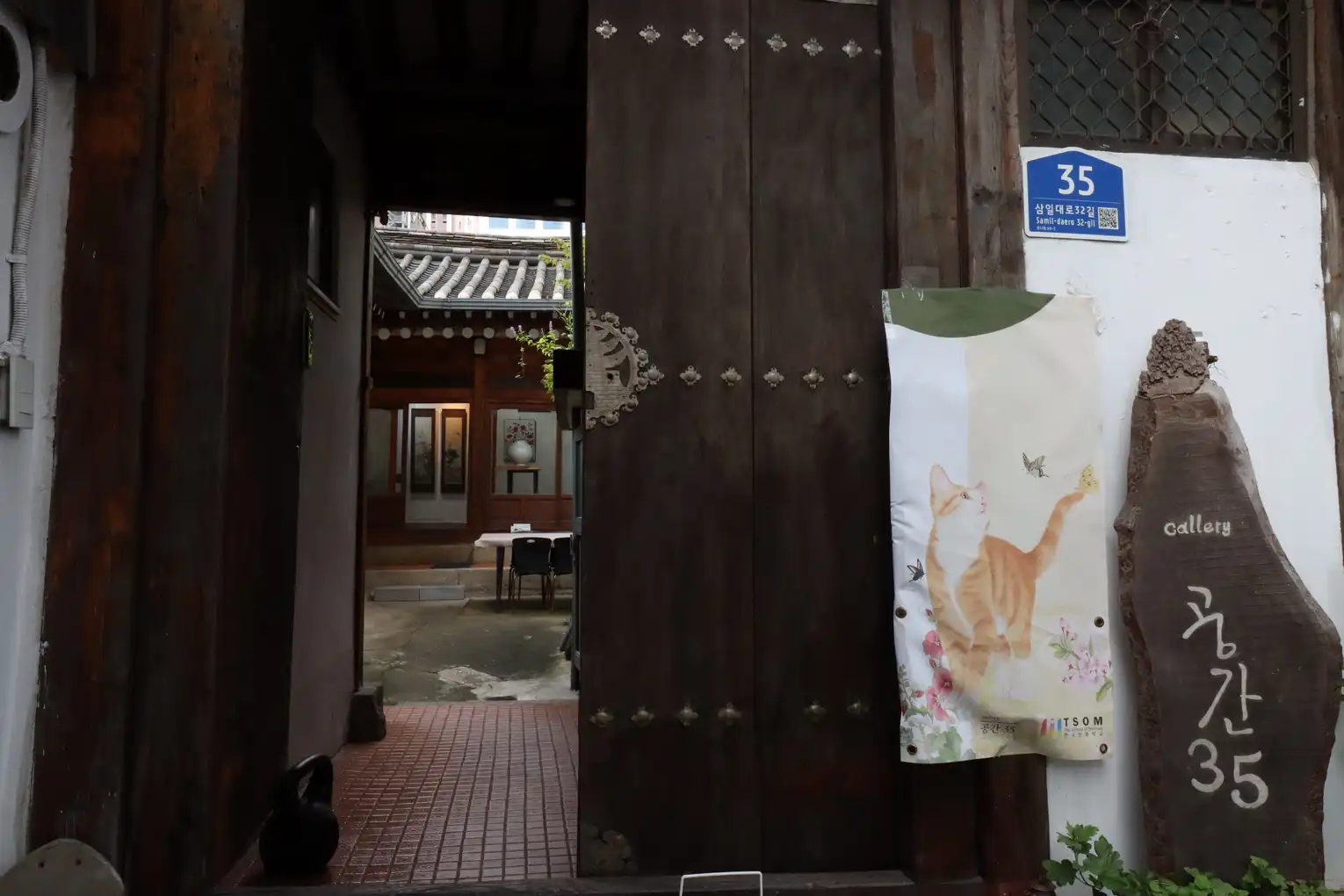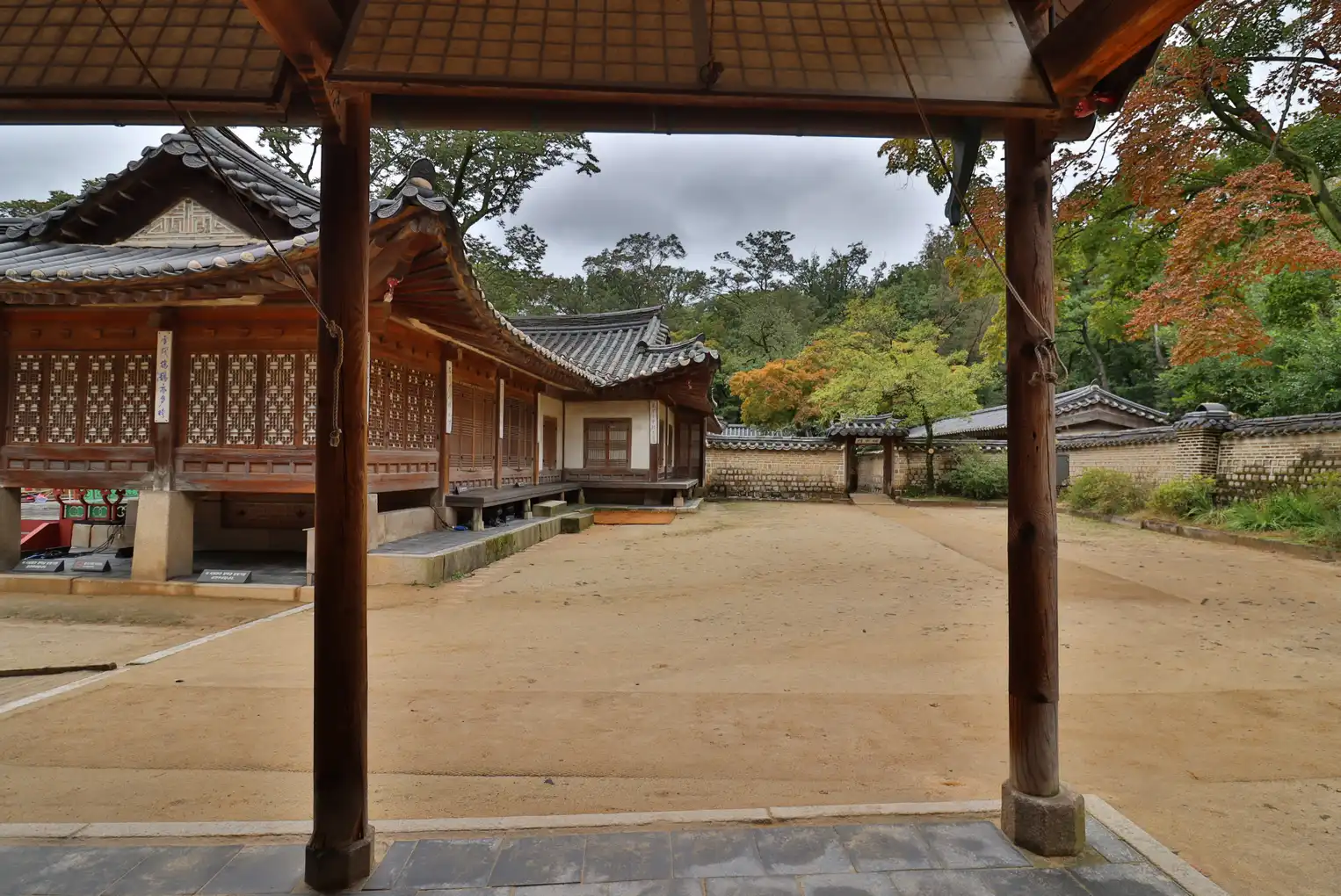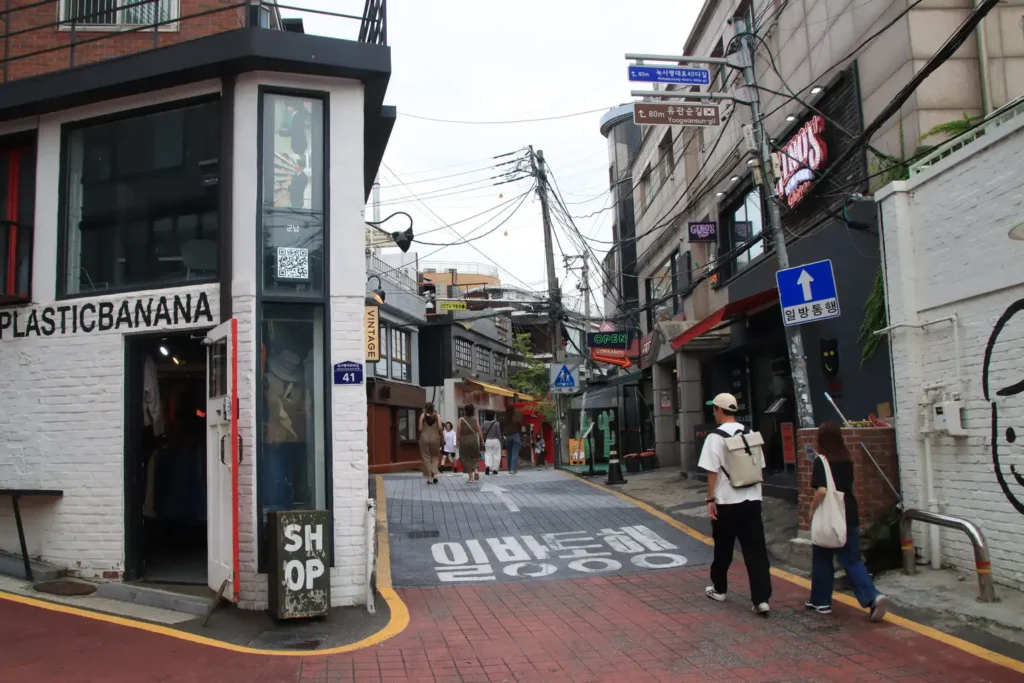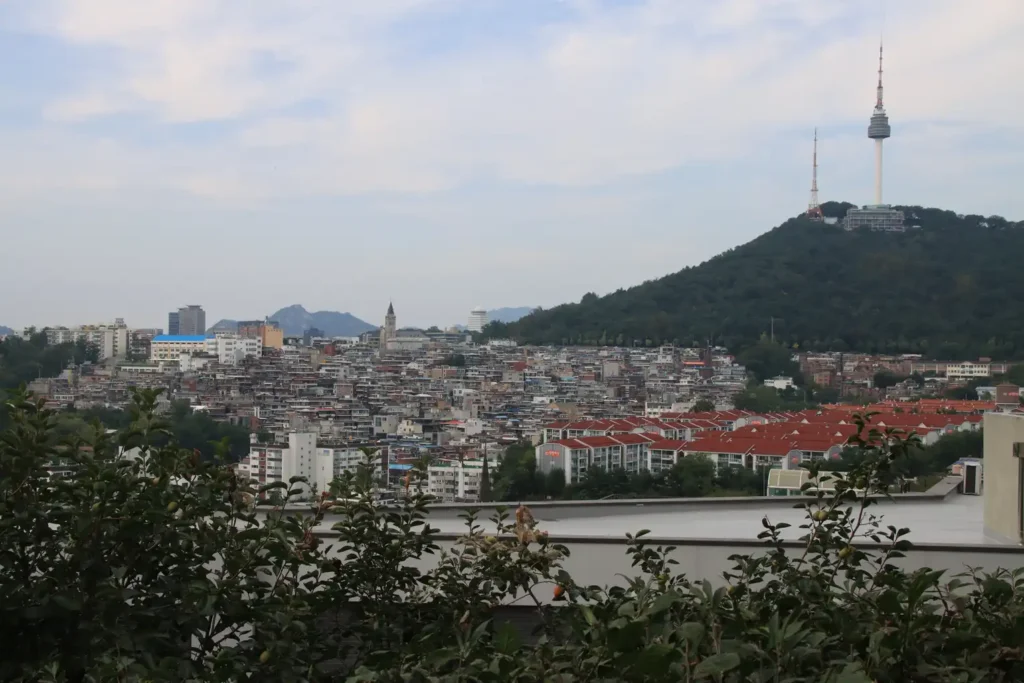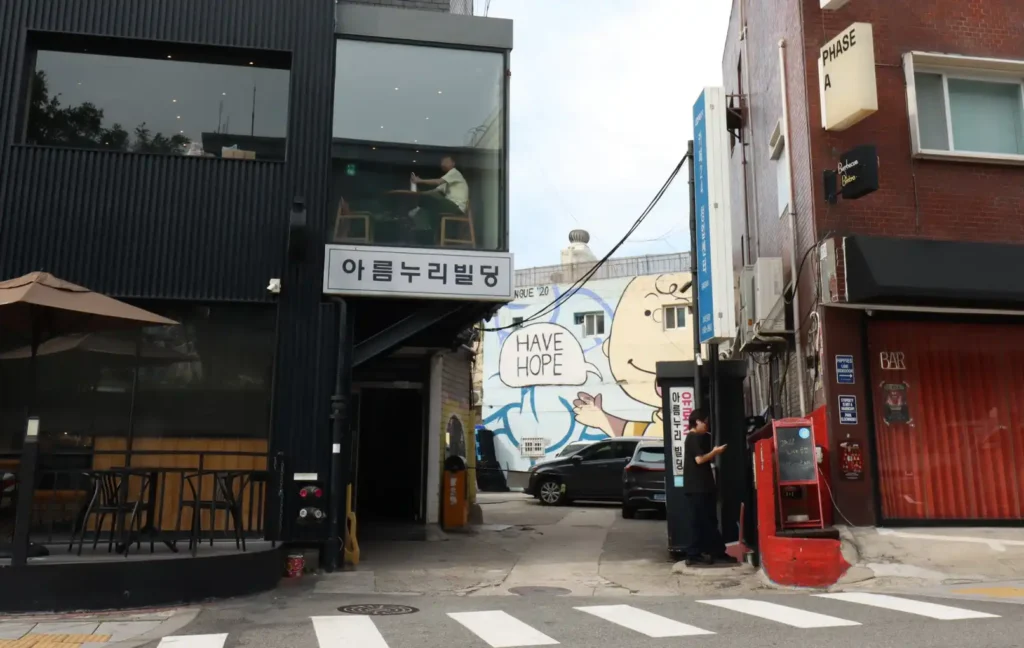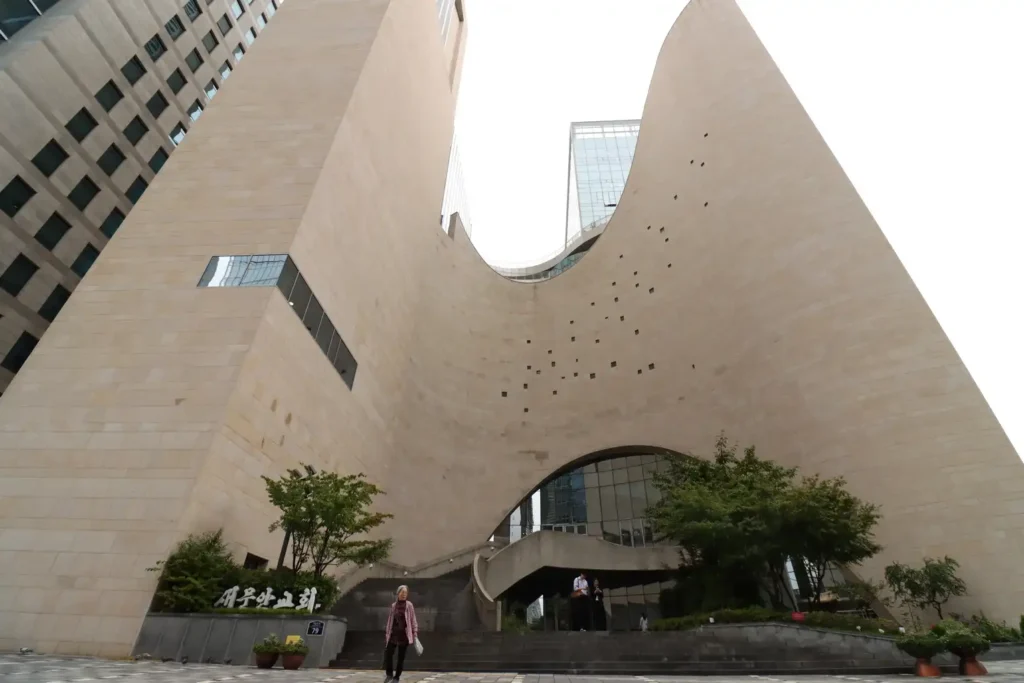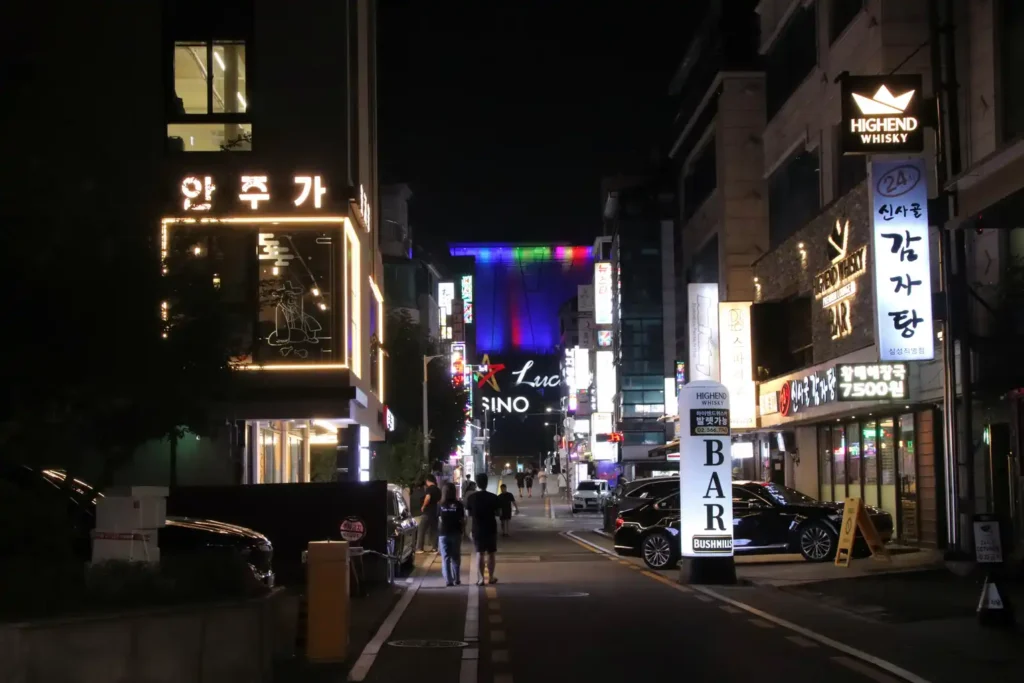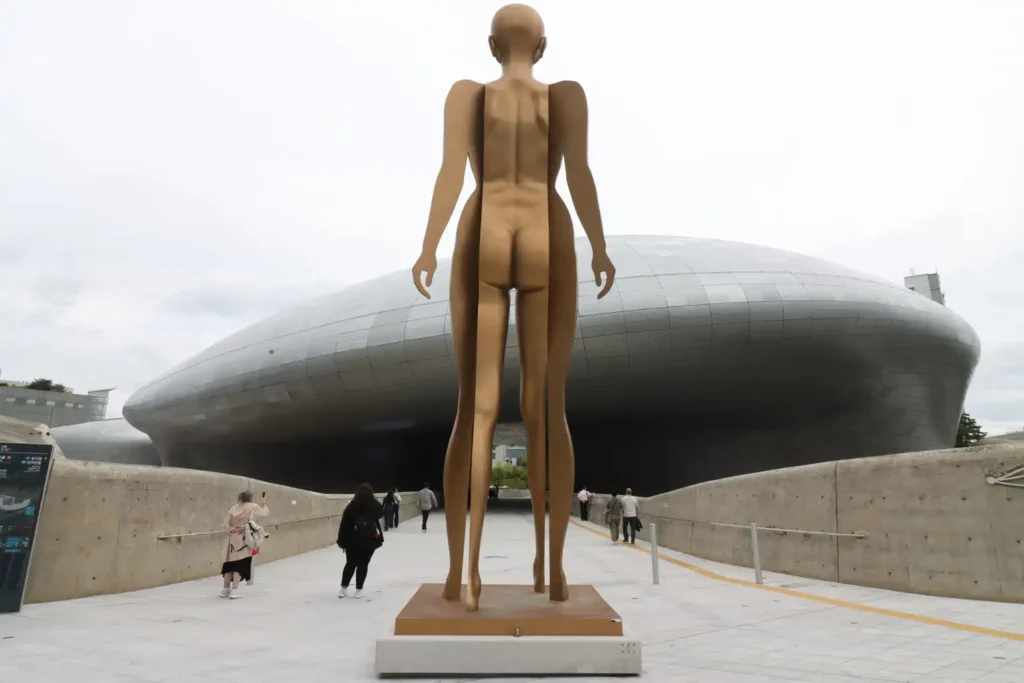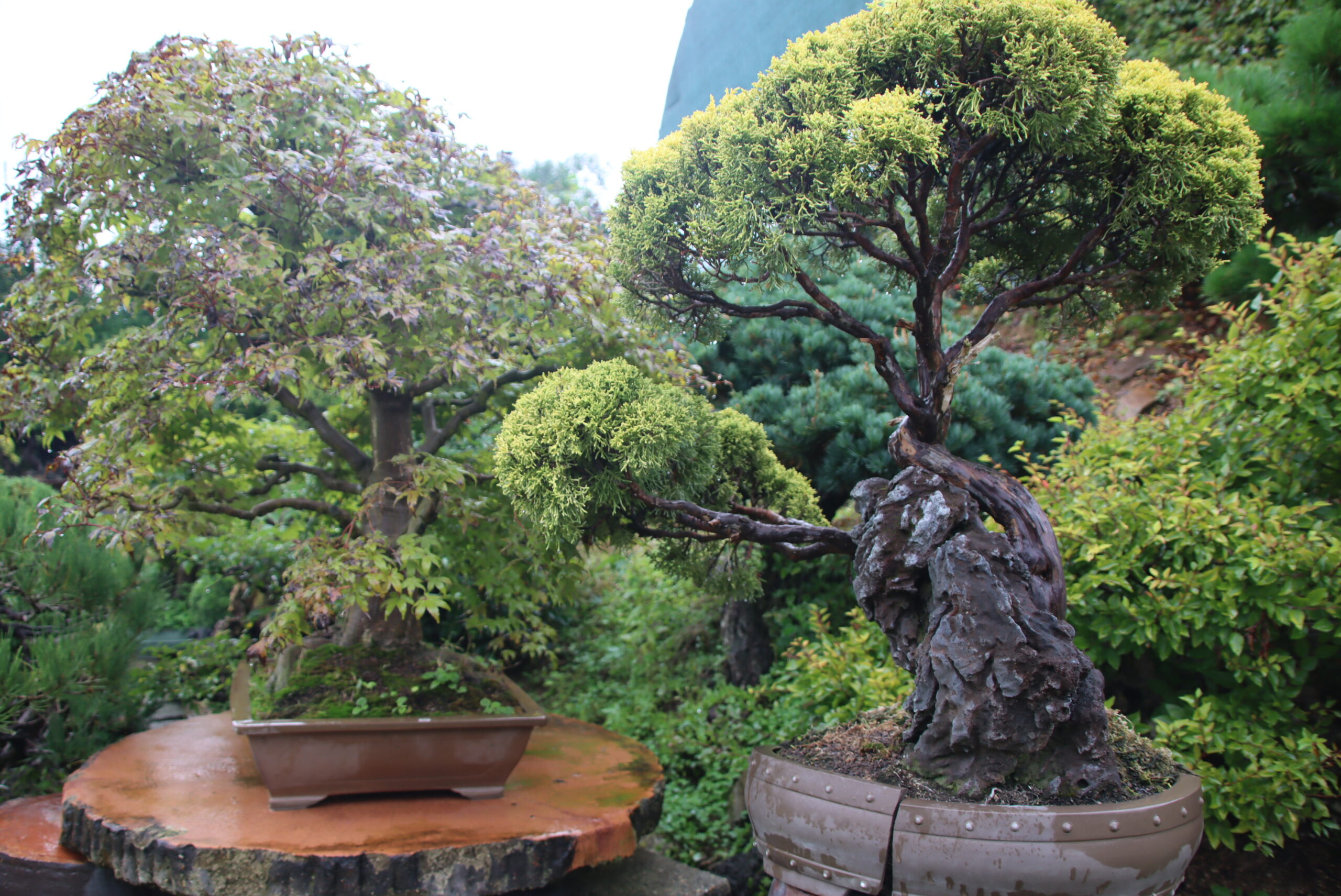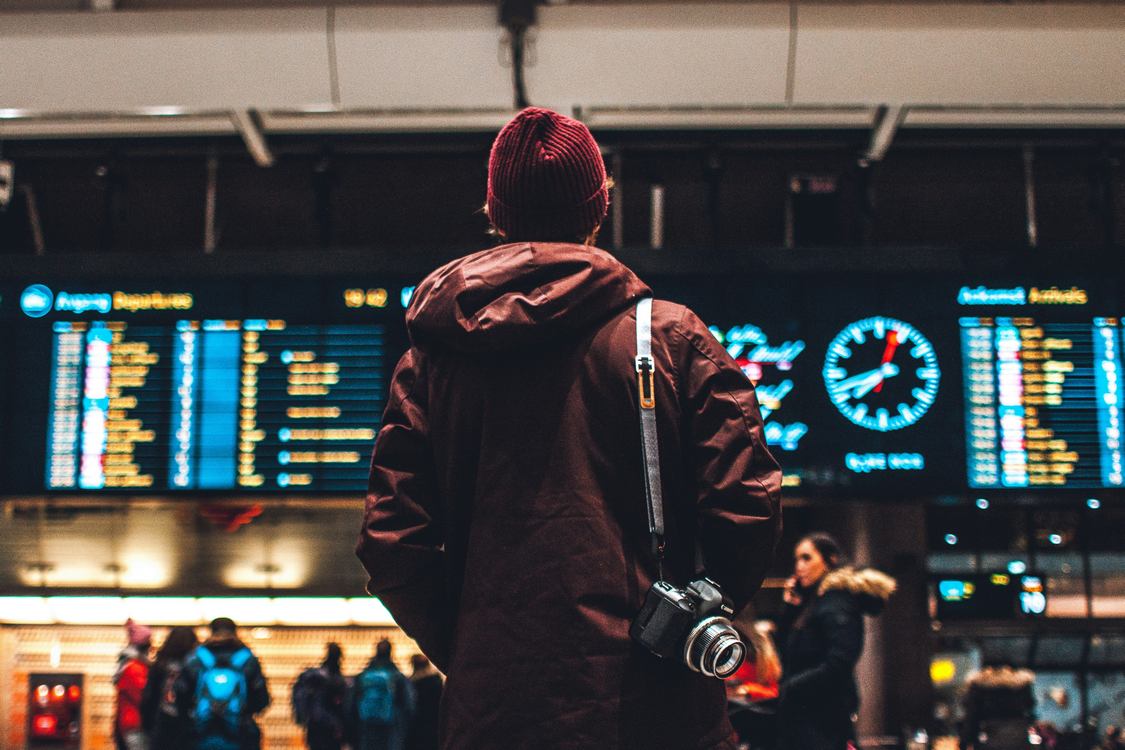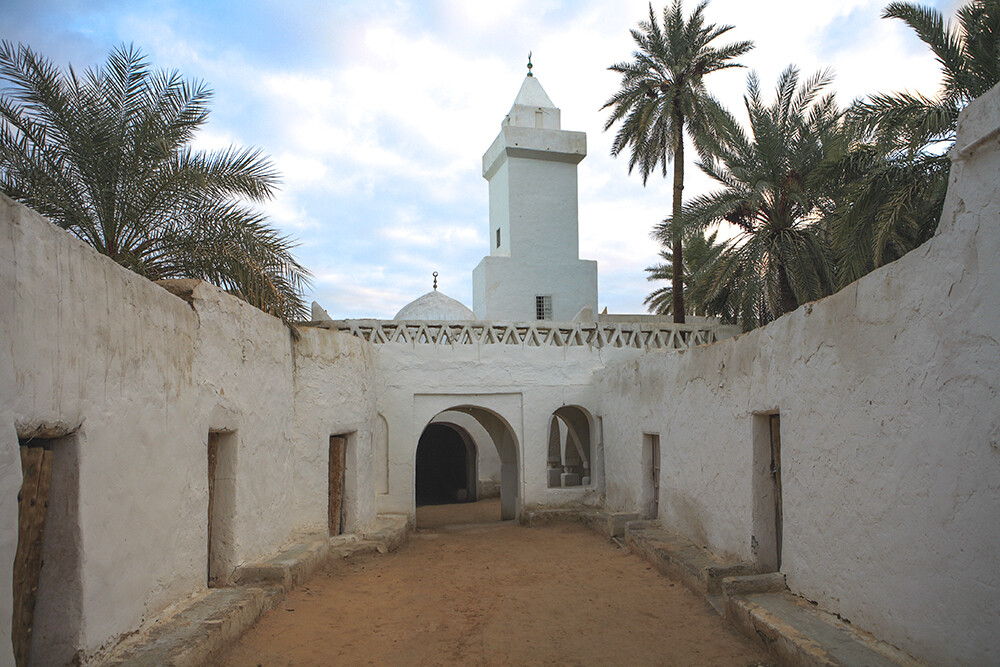If you think you’re going to go visit Seoul you’re in for a massive endeavor. This is a giant, global city with enough things to do and see to occupy a person every day of the week for a month.
The idea, then, of writing an In-a-Day guide for Seoul seems impossible. The trick is compartmentalizing the journey into the achievable and the unachievable, and being content with what you have planned without exhausting yourself running from here to there across this massive city where certain metro trips will take up to 50 minutes, for example.
This guide is less about holding your hand and more about pulling the curtain back on the structure of the city by presenting 4 neighborhoods or sectors in which to pass your day, mostly on foot.
Getting into (and around in) the city
At Incheon International Airport, there is a non-stop train to Seoul Station, from which point you can take a bus or metro to any other stop if you’re near. You may consider getting the all-stop train because it goes to exactly where you’re looking to go, but that might actually take longer as the route to and from the airport contains numerous neighborhoods.

Zone 1: Insa-dong and Changdeokgung
Seemingly ubiquitous in most Asian languages, the word “Dong” in Korean means neighborhood, and so this is Insa neighborhood. Wear your best walking shoes because you’ll continually want to turn down each of the inviting little streets of this historic quarter, lined with shops selling all kinds of presents, souvenirs, art, garments, and foodstuffs. It’s packed with restaurants and tea houses, many of which are up on the second or third floors, and the patrons’ voices and clinking of crockery filters down into the street.
At the end of the lively main street, one comes to the palace of Changdeokgung, arguably the most impressive and beautiful of the four in the city because of its historic garden housed within, where pavilions and pagodas perch on the banks of picturesque ponds. Entrance to the gardens are time stamped to every 90 minutes, so if you’re planning to go, check the entrance times in advance.
Due west of Changdeokgung is one of the capital’s most famous ‘Hanok’ communities. Hanok in Korean means ‘Korean culture,’ but typically refers to the traditional building style: black tiled roofs with curved eaves, transformed as the case may be, into a quaint cafe or souvenir shop. Called Bukchon Hanok Village, the first 200 meters or so will be almost exclusively shops and photo ops, but eventually the street quiets down and the visitor can see what real life is like in a Hanok house.
Due east of Insa-dong is another Hanok area called Ikseon-dong Hanok Village, and is far more lively at night than Bukchon, with bars and the ubiquitous Korean BBQ restaurants spilling their chairs out into the street. The area is centered around the metro stop Jongno 3-ga, which accesses the palace, Insa-dong, Ikseon-dong, and a royal confusion shrine with the same name as the metro stop.
Jongno 3-ga and Ikseon-dong are perfect places to eat, as there are a hundred restaurants or more of all different varieties. If you want to be a local, wake up early to stand in line at Mil Toast Ikseon, where petite loafs of soft, Western-style bread are baked with a touch of honey, steamed in linen cloth inside bamboo trays, and eaten with morning coffee or tea. If you want to eat like a local at night, wait until 6:00 pm and between metro exists 4 and 5 will be some two dozen BBQ trucks that erect tents and serve beer and grilled meat on the street out of the wind and weather in an atmosphere that’s somehow both raucous and cozy.
IF YOU LIKE MUSEUMS: Near Changdeokgung is the Museum of Traditional Korean Folk Music, which along with containing exhibitions on physical instrument making, has numerous collections of songs sung by working country folk, and offers a brilliant touch of culture among the somewhat gaudy Hanok villages. There is also a listening room, that sometimes holds small performances.
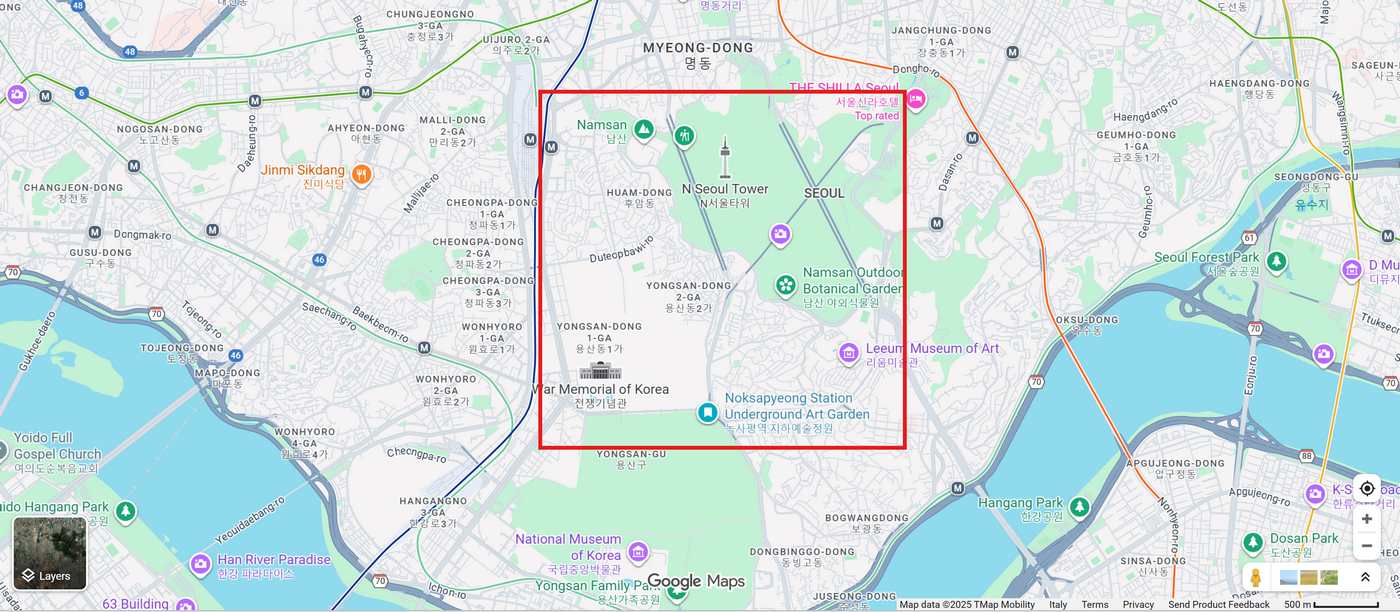
Zone 2: War Memorial, N. Seoul Tower, Itaewon-dong
A decent entry point for this day trip is the Samgaji Metro Station on the brown line (6), or the bus station War Memorial of Korea. Alternatively, the Nogsapyeoung Station on the same line will take you into the village faster but doesn’t provide a linear walking route.
IF YOU ARRIVE HUNGRY: Right south of the War Memorial stop is a happening little series of open-air alleyways packed with restaurants and cafes of every description where one might expect to find some truly epic street grub. One can find it on a map application by searching for the Samgaji Catholic Church.
If the Insa-dong zone is steeped in traditional history, this route and zone are steeped in contemporary history. Along with the War Memorial the area around Itaewon-dong contains the American and South Korean military headquarters in Seoul, as it has done since the end of the war in 1953. Itaewon itself was the location of the Japanese Imperial occupation, which was then appropriated by the Americans. The 12 barracks that were built to house the Japanese garrison have been repurposed into apartments, but they still maintain the red, gentle slanting roofs seen in pictures from the occupation days.
The memorial is a wartime museum and a must for anyone interest in that history. Another way to interpret the history of Seoul through the lens of struggle, occupation, and war, is to visit the Noksapyeoung Station Underground Art Garden. This effort towards inspiring a desire for peace among Seoul residents centers around the interpretation of the metro station as an art project itself by Naruse Inokuma Architects of Japan (ironically). The architects explain their design thusly…
“To be more precise, what we created was a huge, white dome made of expanded metal hung within the station’s atrium. While the Roman Pantheon emphasizes shadows, we tried to underscore fluctuations in light by abstracting the existing landscape of the station in a thin fog through our dome. Direct light from the skylight lights up a portion of the dome and bleeds out. It creeps slowly throughout the space along with the passage of time”.
Inside the station is an exhibit on the military history of Itaewon, which perfectly invites the traveler to carry on up into the neighborhood. Itaewon-dong is a very vertical space, and some of the inclines are drastic for street travel. Fitness is recommended. Before ascending into the narrow townhomes—the haunts of cafes and expatriates from other countries—it’s worth walking around the wealth of cool restaurants and shops near the main road. Fresh seafood eateries flank record stores, and with the American military base a mere 300 meters away, it’s no surprise the area leaves a lot of Korean design out of the picture.
North from Itaewon-dong is Namsan (san meaning mountain), an ecological preservation area within the metropolitan area crowned by Seoul North Tower, a visit to which is a must if you’re the type of person who loves to look at city skylines. On the other end of Namsan, from the prospective of Itaewon-dong is another Hanok village, while a portion of the Seoul City Wall passes through Namsan. The city wall, which will be referenced later, is an almost 20 kilometer interpretive trail that circles the entire city, and connects numerous destinations for the surefooted urban hiker.
Alternatively, if you go south from Itaewon rather than north, you arrive at the massive Han River, in front of the newly-renovated Banpo Bridge, with a swirling pedestrian underpass that explodes in rainbow colored fountains at night, and a truly stunning way to end the day.
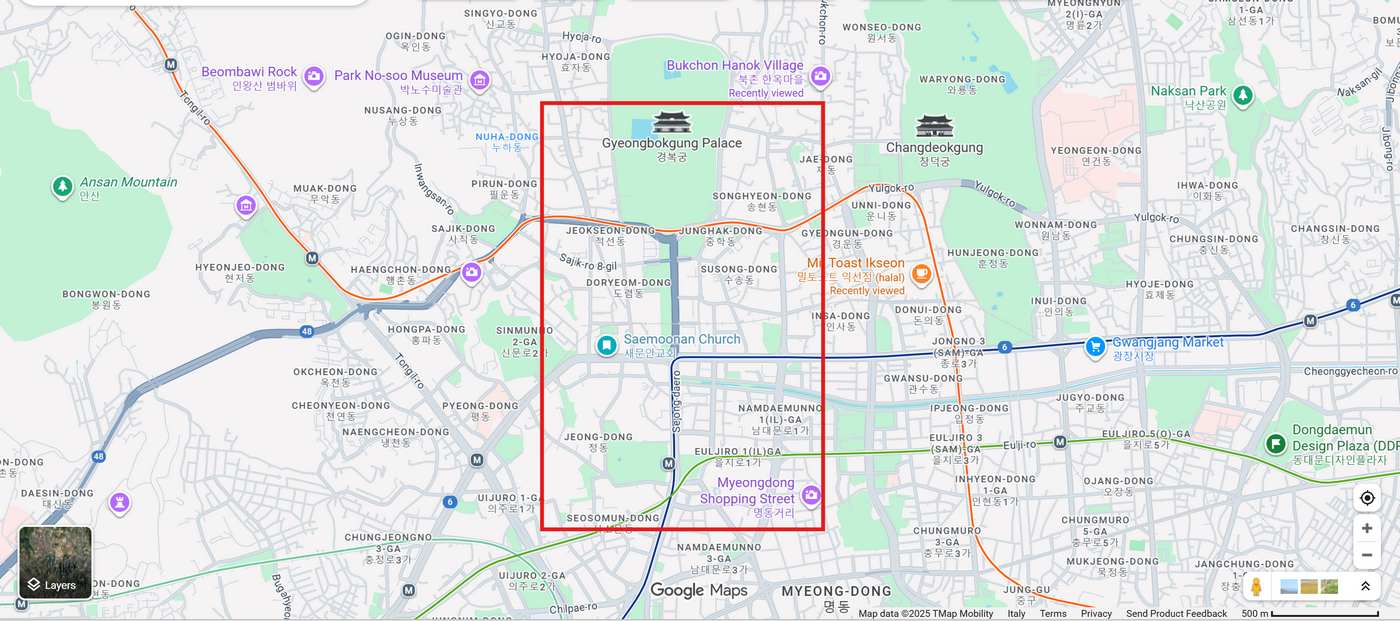
Zone 3: the Heart of Seoul
Due west of Zone 1 is the true geographic and spiritual heart of the city. Seoul was built over 500 years ago according to the principles of geomancy known collectively and roughly in the West as Feng Shui. According to these principles, there were certain organizing methods that placed the city in the best position to benefit from good fortune.
The largest of all the palaces in the city, Gyeongbokgung was placed at the axis of the geomancer’s design, and as such, it serves today as more or less the center of the massive city. Gyeongbokgung is an incredible structure, although it was rebuilt recently, after being destroyed by the Japanese in the twilight of the 16th century. It sits at the end of a main drag flanked by wide promenades shaded with Gingko trees. The palace is surrounded by museums. There is a ridiculous number of museums in Seoul, and many are found here, including the national museums of folk and of contemporary histories, the Kukje Gallery, the National Museum of Modern and Contemporary Art, a traditional crafts museum, a preserved mansion called Baek Inje House, and more.
The palace grounds spill out northward into a green space filled with additional royal buildings, museums, and landmarks. On Google Maps the area is drowned in purple-colored icons. To the northeast of the palace is another Hanok village called Samcheong Dong.
IF YOU LIKE ARCHITECTURE: Going down the central drag away from the palace, one arrives at the Saemoonam Church, a brilliant interpretation of Christian architecture, as the building literally spread its white robed facade out to envelope you, as if it were the very arms of the Lord. Definitely worth seeing.
Once there, you’re in a part of the city that’s a mesh of giant office buildings, countless more museums of art and history, and embassies. There are another two of the four palaces of the Joseon Dynasty, a modest one called Gyeonghuigung, and a restored one that housed a Russian residence Deoksugung.
IF YOU LIKE THEATER: The Painters Gwanghwamun Theater has shows and spectacles that can be viewed in English with the help of a cool piece of tech. A set of glasses will translate Korean and project it onto the lenses so you can watch and read as if it were a TV program in real time, allowing tourists from several European and Asian countries to enjoy the full breadth of the of theater’s season in their own native languages.
At the far southern reaches of Zone 3 is Myeong-dong, an area famous for its shopping, particularly after dark where the sheets are aflame in neon lights advertising everything one could think to buy. It’s the perfect place to stop for dinner after sundown, perhaps before a show at The Painters, and reachable on metro line 4.
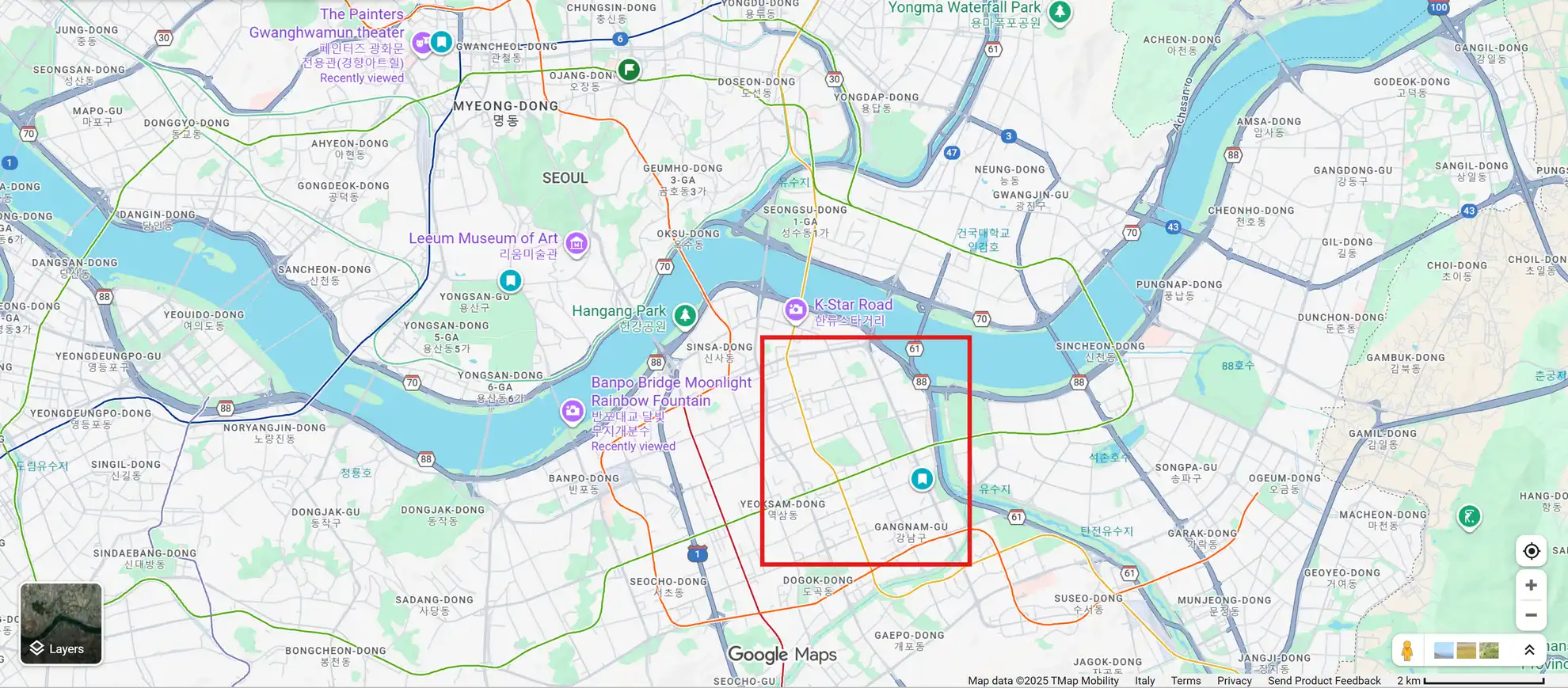
Zone 4: Gangnam, architecture, Lotte World Tower
It is the site of the most-watched video on YouTube, (5.7 billion at the time of writing) a transformational force in Korean culture around the world. Gangnam is larger than a “dong,” and encompasses a wide-topographical area south of the Han River. Psy’s “Gangnam Style” referenced this area in parody of its uptown, privileged attitude, where I once saw a phonebooth-shaped entrance in the middle of the sidewalk to an underground tech laboratory that promised to perfect your golf swing.
Gangnam isn’t nearly as pedestrian friendly as the other zones, and in some places is carved up by 10 lanes of traffic with crosswalks spaced far apart from one another. There’s an eclectic amount of things to do here. For example in the northern end of the zone is the Han River, along which are some dramatic boulevards, one in particular called K-Star Road, which functions a little like the Hollywood Walk of Fame.
In the center, Bongeunsa Buddhist Temple provides for excellent people watching of rich Gangnam residents bowing before Buddha while likely ignoring all that he taught about freeing oneself from attachments. Next to that is an aquarium attached to a big casino. A spot of history can be found west of all that in one of the several royal tombs of the Joseon Dynasty, which together were inscribed as a UNESCO World Heritage Site.
A rather stunning piece of architecture can be found along the easternmost drag through Gangnam called the Summit Gallery. Owned by a high-end, high-rise real estate company, it features interpretive art exhibitions that might be worth visiting just to look at the drama of the facade from the inside.
To the east of Summit Gallery, which lights up at night as so much in South Korea does, is the tallest building in the country: the Lotte World Tower. Situated next to a lake and a theme park, the building is 123 stories tall, and boasts an incredible observation deck. It also hosts an aquarium, as well as a concert hall, cinema, and shopping mall. The observation deck is open from 10:30 a.m. to 10: p.m. on weekdays (to 11:00 p.m. on weekends).
At the Starfield Coex Mall, a large sculpture in honor of Psy’s “Gangnam Style” was erected not long ago, and if you were one or more of the 5.7 billion views on that video, it isn’t a half-bad place to start a trip through the area; something of a pop-culture pilgrimage if you like.
Honorable mentions: Dongdaemun, Hongdae street
Two areas that a visitor might want to include in their visit are the area around Dongdaemun Design Plaza and Hongdae shopping street. The former is a dramatic, alien slug-like building of massive proportions designed by the late and legendary architect Zaha Hadid. It sits next to one of the original gates of Seoul, Dongdaemun. Together with a connection to the Seoul City Wall hike, it’s a cool area to visit.
Additionally, for shopaholics, there’s another shopping and eating area called Hongdae Shopping Street, where a pedestrian-only area flanked by giant towers is lined by pop-up stalls and vintage shops selling old clothes.
This is only a taste of the total experience of Seoul. It’s like trying to plan a day-trip through Beijing or Manhattan: a folly. However, at least with a clear and ordered idea you can chop the city up into pieces, pick the one you like the most, and put the others in the travel pantry for later. WaL
We Humbly Ask For Your Support—Follow the link here to see all the ways, monetary and non-monetary.
PICTURED ABOVE: Seoul, old and new. PC: Y K on Unsplash.
